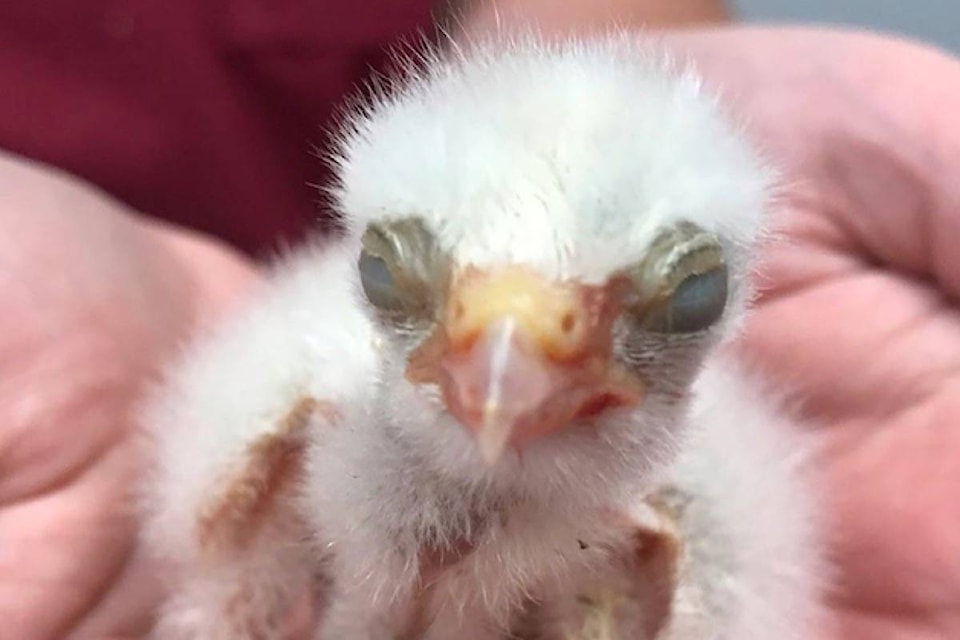A renewed focus by many homeowners to spruce up their yards during the pandemic has baby birds paying the price, says the Medicine River Wildlife Centre.
Executive director Carol Kelly said there’s been about a 60 per cent increase in eggs, babies and fledgling birds brought to the wildlife hospital this season.
“It is a real problem this year. People are at home trimming their landscaping, and cutting trees, and we’re getting all kinds of babies that are being knocked down,” Kelly said.
About 20 eggs or birds are in care and will be returned to the wild. Right now, the centre is looking for a Merlin falcon nest for a baby bird ready for a family. The falcon hatched at the centre after eggs were knocked out of a nest.
Among the fledglings at the centre are chipping sparrows, white-breasted nuthatches and Brewer’s black birds that also need families.
“At this point, those babies need to go with a family that can then teach them. Mom and dad teach them to find appropriate food, allude predators, stay out of the rain — all of the things they need to know to survive out there. Their highest learning curve is when they leave the nest.”
She suggested that people check their trees and bushes for nests before beginning their yard work. If nests are found, Medicine River can advise homeowners when the nest will be empty and when it’s safe to bring out the axe.
Kelly said a lot of calls are also coming in from people finding baby blue jays, robins and crows on the ground.
“Those are all the species when they come out of the nest, they can’t fly for a few days, and people are mistaking it for being injured. They’re not injured. They’re just doing what the normally do.”
Related:
Survey estimates much higher Alberta bird populations than thought
Christmas bird count reveals feathered surprises
A new survey estimates that Alberta’s bird population is higher than previously thought, but that doesn’t change the overall declining trend of the province’s boreal songbirds.
University of Alberta scientists say the standard method for bird counting, which involves sending counters to roadsides, may distort results because areas such as northern Alberta are full of roadless bushes, where significantly more birds can be found.
Kelly said she hears plenty of birds in forests where she relocates wildlife, but said little song birds in urban areas are on the decline.
She said urban dwellers enjoy birds, but there’s controversy about whether they should attract birds by feeding them.
“You’re encouraging birds into the city, where there’s an abundance of cats, and windows, and vehicles and all those other things that kill them.
“We like to see nature and we like to see them in our yard, but there is that train of thought — should we be feeding them in the cities?” Kelly said.
Judy Boyd, who puts together reports on the May and Christmas bird counts in central Alberta, said a lot can be learned from local bird tallies.
“I think our May and Christmas species count are important, because it goes back a lot of years, and you can tell trends from that. To not count at all would be wrong,” said Boyd, who is with the Red Deer River Naturalists.
— With files from The Canadian Press
szielinski@reddeeradvocate.com
Like us on Facebook and follow us on Twitter
